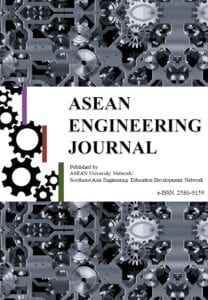STUDY OF ENTRANCE CONFIGURATION EFFECT ON STREAMWISE VORTICES IN WAVY CHANNEL
DOI:
https://doi.org/10.11113/aej.v5.15460Abstract
Two different entrance configurations of a channel with wavy (sinusoidal) surface, namely cosine entrance and negative cosine entrance configuration, were numerically and experimentally investigated to study the downstream development of the induced counterrotating streamwise vortices. The study is limited to the laminar boundary layer flow. The negative cosine entrance configuration has a “blockage effect” which subjects to large pressure penalty. However, under a certain amplitude and wavelength of the sinusoidal surface, this configuration might have lower hydraulic channel gap than the other configuration due to the formation of separation bubbles at the valley of the sinusoidal surface which makes the stream lifted-up and behaves like a flow in a smooth channel. As such, the flow in the negative cosine entrance configuration is more stable than that in the cosine configuration. This is indicated by the evolution of streamwise vortices at Re = 2700 that are preserved farther downstream prior to its breakdown into turbulence.







